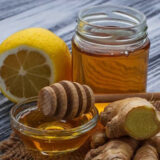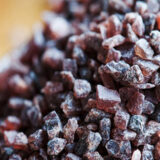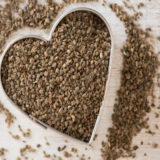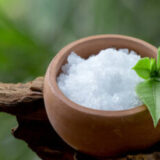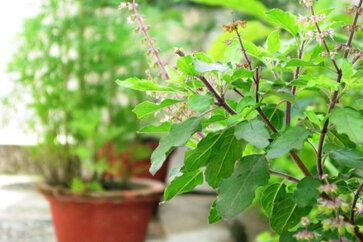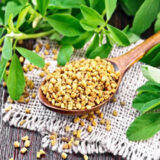What Are The Benefits Of Taking Fenugreek Daily?
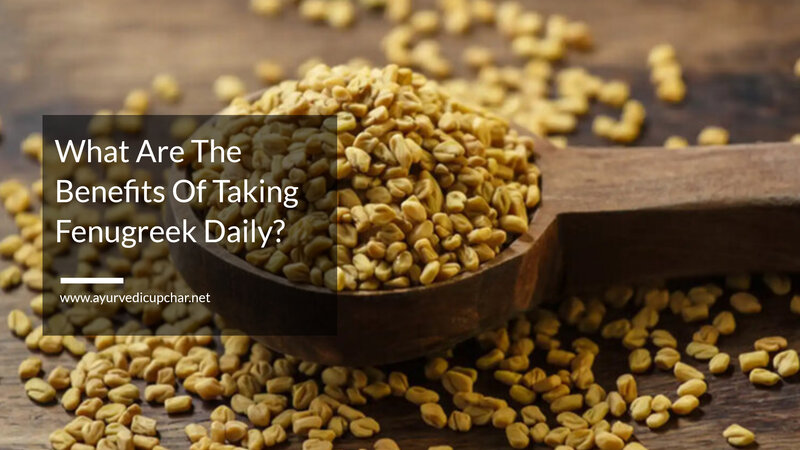
Fenugreek is one type of flowering plant belonging to the family Fabaceae. It is native to India and Northern Africa, and in India, it is known as methi.
This spice has highly beneficial properties for the body since it provides excellent amounts of proteins, fats, starches, and sugars.
In fact, in 100 grams of fenugreek, we find 23 grams of protein, 58 grams of carbohydrates, and 6 grams of fat. In addition to minerals such as calcium, iron, and magnesium, and vitamins A, C, D, B12, and B6.
Due to its amazing properties, it is also known as a medicinal plant that gives incredible benefits to the body and skin. It relieves the digestive disorder of reflux, and it is used in weight-loss diets.
It also helps reduce blood glucose levels and has a laxative effect. We will know more details about its uses and benefits so keep reading…
Fenugreek other names
- Species: T. foenum-graecum
- General name: Fenugreek
- English name: Fenugreek
- Arabic name: Hhulbah, Hhelbah
- German name: Gemeiner, Hornklee, Bockshornklee
- Indian name: Sagmethi, Methi, Kasurimethi
- Persian name: Shanbelileh
- French name: Trigonelle, Senegrain, Foingrec
- Italian name: Fienogreco, Erbamedica
- The other Indian name for Fenugreek herbs
- Hindi name: Methi Dana
- Marathi name: Methya
- Telgu Name: Menthulu
- Kannada name: Menthya
- Tamil name: Vendayam
Plant type
Herbaceous plant, with trifoliate leaves and white or light yellow flowers, whose fruit is a pod containing 10 to 20 light brown grains. It belongs to the leguminous family.
Fenugreek where does it grow
Fenugreek is native to India and Northern Africa and the Middle East, although it has been cultivated throughout the Mediterranean basin since ancient times.
It is a plant known for more than 2,000 years in the traditional medicines of China and India, countries where it is used as a spice for its peculiar aroma.
Fenugreek was one of the species used by the ancient Egyptians in their embalming ceremonies.
The ancient Greeks and Romans used them for culinary and medicinal purposes.
Habitat
It grows in southern Europe, North Africa, and Asia, where it is grown on a large scale in China and India.
Fenugreek active constituents
- It contains a large amount of mucilage (a type of soluble fiber), among which glucomannan stands out.
- It also has other fibers, such as lignin, cellulose, gums, and pectins.
- It contains many proteins (30%) and the rest of its composition includes carbohydrates, lipids (lecithin and oleic, linoleic, and palmitic acids), trigonelline (an alkaloid that is also found in coffee beans and cannabis seeds), sapogenins ( diosgenin, tigogenin, myogenin, yamogenin), saponins, coumarins, flavonoids (rutin, vitexin, orientin), essential oil, nicotinic acid, vitamins (A, C and several of group B) and minerals (calcium, phosphorus, magnesium, iron).
Properties
Internally: It is demulcent, expectorant, laxative, digestive, hepatoprotective, restorative, galactagogue, anti-inflammatory, hypoglycemic, and hypocholesterolemic.
Externally: Topically it also has demulcent, expectorant, and anti-inflammatory properties.
Indications
Internally: Due to its mucilage content: it protects the stomach lining, calms and cures acidity and gastric inflammation, and helps heal wounds, making it excellent in case of ulcer, gastritis, or irritable bowel syndrome.
Various studies indicate that Fenugreek is as effective as Omeprazole.
- Combat constipation, for which it is best to grind the seeds since in this way they release all their fiber.
- In addition to protecting the stomach, it also protects the pancreas, liver, and kidneys and prevents the formation of kidney stones, since it reduces the levels of calcium oxalate.
- The mucilage of fenugreek is composed mostly of glucomannan, a soluble fiber that has a great capacity to retain water, that is, to form a gel and increase volume. This bulky gel, which forms in the digestive tract, presses on the walls of the intestine, facilitating peristalsis (movement of the intestines). This stimulates digestion and appetite, and as this plant also fortifies the body, it is ideal to help gain weight and strengthen inappetent, anorexic and anemic people.
- It is also used to increase muscle mass and volume and gain strength, which is why it is used in sports supplements, especially for bodybuilders. For these cases, it is better to take it as an infusion or tablet.
Taken as a powder
- It helps to lose weight since when taken it provides a feeling of satiety.
- On the other hand, fenugreek regulates pancreatic secretions, especially insulin. The components of this plant stimulate insulin production and delay glucose absorption, which is why it is very effective in lowering sugar levels in diabetes.
- Mucilages make it a good expectorant, so it is indicated in case of colds, bronchitis, or asthma.
- It also reduces the level of “bad” fats, such as cholesterol and triglycerides.
- Fenugreek seeds are highly estrogenic, so they can combat many female problems, such as menstrual cramps, and menopausal symptoms, and stimulate milk production in lactation. In addition, it has a reputation for increasing breasts.
- It favors the growth and health of the bones, which is why it is indicated in the case of rickets, osteomalacia, and fractures.
Externally uses of fenugreek
- It heals wounds that are difficult to heal: cracks (on the nipples or lips), irritations, and inflammations on the skin, it also helps to mature abscesses and fight eczema.
- Mucilage, with its ability to absorb large amounts of water, moisturizes and cleanses the skin and favors the elimination of pus, which is why it is highly indicated in case of acne and cellulite (in poultice).
- Combat oral and throat problems (tonsillitis, pharyngitis) by gargling.
- Due to its anti-inflammatory capacity, it fights hemorrhoids (if a sitz bath is performed).
- Treat joint disorders such as arthritis, osteoarthritis, or gout.
- Applied to the hair, it prevents and treats hair loss, in addition to giving it shine.
How to use fenugreek seeds?
Although the whole plant can be used, what is most used are its seeds, both internally (ground or infused) and externally, in the form of poultices.
Internal use
Fenugreek can be taken in seeds or sprouts (as a food), in flour (by grinding the seeds), in infusion, tincture, or capsules.
External use
- The paste resulting from the decoction of fenugreek flour can be applied topically (draining the water) in the form of a plaster, poultice, or sitz bath.
- You can also use the water from the decoction to gargle.
Precautions
It should be taken with caution if you are taking anticoagulant or antidiabetic medications since fenugreek enhances its effects.
Contraindications
It is contraindicated during pregnancy, due to its phytoestrogen content.




